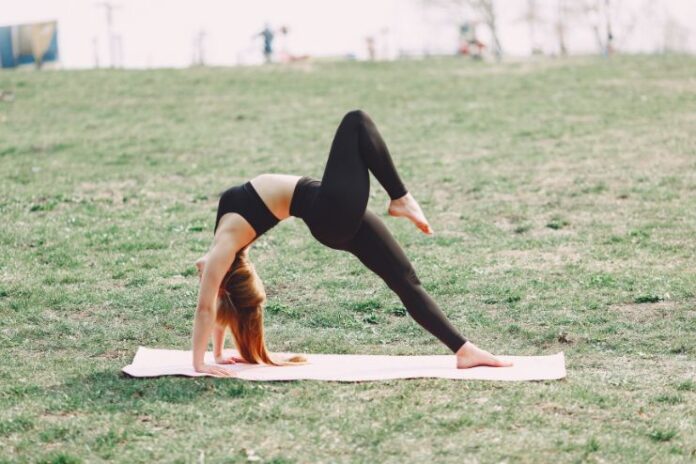AI Contribution
At HealthSpectra, we may use AI to refine grammar and structure, but every piece is shaped, checked, and approved by real people, our expert writers and editors, to ensure clarity, credibility, and care. Learn more..Affiliate Disclaimer
Some links in this article are affiliate links. We may earn a small commission if you make a purchase through these links, at no extra cost to you. We only recommend products we find useful to our readersBarefoot training is all the rage these days, with fitness lovers and athletes giving it a go. You’ve probably heard people saying that working out without shoes helps improve performance, makes your muscles stronger, and boosts your body’s awareness of movement.
However, like with most things in fitness, opinions are divided. While barefoot advocates swear by it, others argue that shoes are essential for support and preventing injuries. So, what’s the real deal? Is barefoot training the way to go, or should you stick to your trusty sneakers?
In this article, we’ll break down both sides of the argument to help you decide. First, we’ll dive into the science behind barefoot training to understand how it affects your muscles, joints, and overall movement, including the risks and drawbacks of going barefoot.
Don’t worry, though; if you’re curious about trying it out, we’ll guide you through a safe transition into barefoot training to help you avoid injuries. Plus, we’ll discuss how barefoot training can be applied to different sports and workout routines.
Ready to take a step forward, literally? Let’s get into it!
The Science Behind Barefoot Training
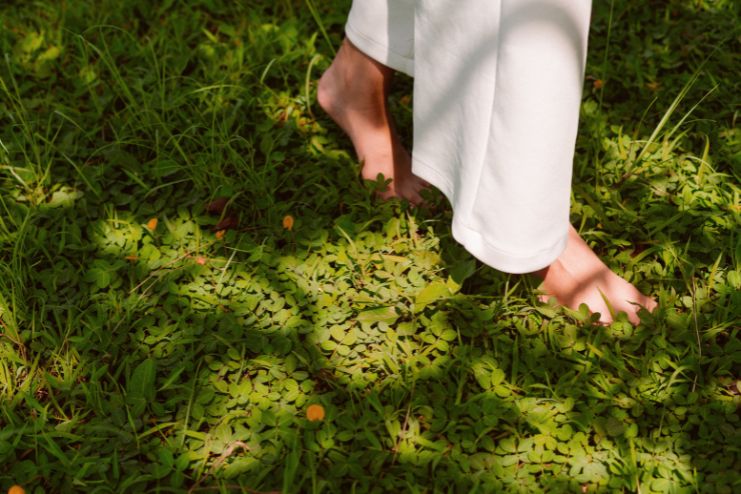
Let’s start with the basics—our feet are designed to work without shoes. Yup, believe it or not, those toes and arches were built to handle the natural ground beneath us.
When we train barefoot, all the tiny muscles, tendons, and ligaments in our feet and lower legs start to kick into high gear. This extra engagement helps build strength and mobility that we often miss out on when we’re relying on the support of shoes.
Without the cushion of a shoe, your feet have to work harder to stabilize your body. That extra sensory feedback your feet get from the ground can lead to better balance, coordination, and body control.
Your body becomes more in tune with itself, which can help you move more efficiently. Some studies even suggest that barefoot training might lower your injury risk and improve athletic performance.
The idea is that by improving your foot strength and balance, you could be less prone to common issues like ankle sprains or muscle imbalances. It’s like giving your feet a mini workout of their own every time you train!
READ MORE: 13 Amazing Benefits Of Walking Barefoot For Promising Results
Key Aspects of Barefoot Training
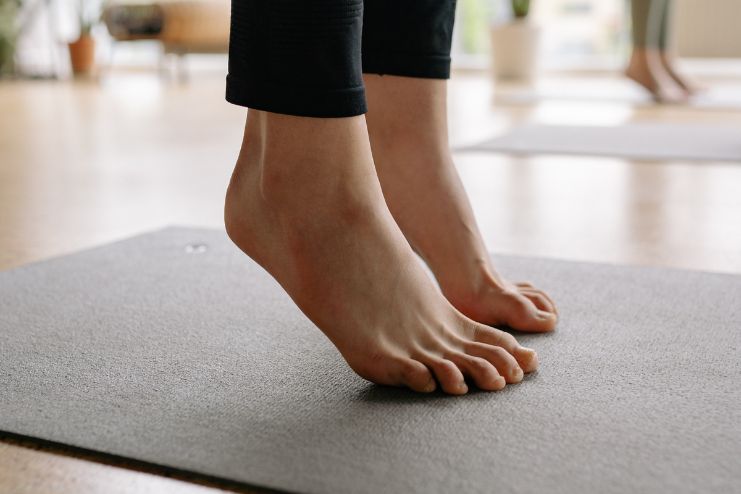
Barefoot training isn’t just about going shoeless — it’s about reconnecting with how the body naturally moves. It emphasizes the feet’s role as the foundation of movement, encouraging you to engage them fully during workouts instead of relying on padded shoes for support.
A major aspect is the increased sensory input from the ground. Without the barrier of shoes, your feet can better detect surface changes, improving coordination and real-time feedback during exercises. This heightened awareness can be especially useful in balance-heavy or mobility-focused routines.
Another key element is the gradual adaptation it requires. Barefoot training isn’t about instant transformation — it’s about slowly allowing the muscles, ligaments, and tendons in your feet and ankles to strengthen over time, supporting better movement mechanics and long-term performance.
Benefits of Training Barefoot
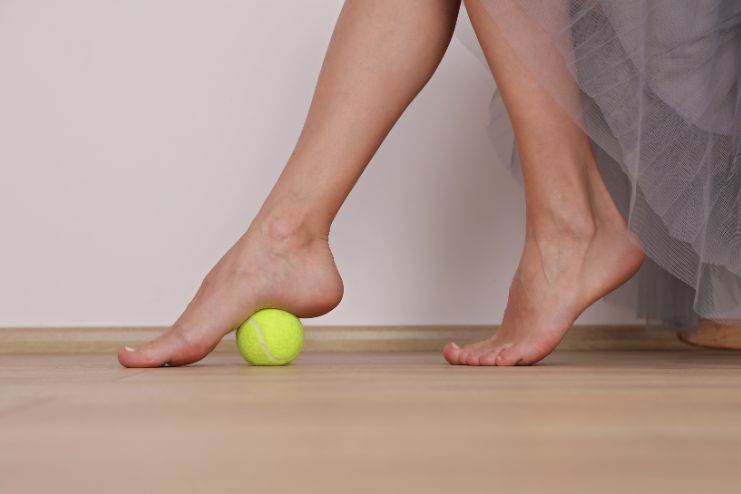
Whether you’re lifting weights, practicing yoga, or going for a run, ditching your shoes can help improve your overall performance and reduce injury risk.
Here’s why so many fitness enthusiasts are opting for barefoot workouts:
- Strengthens Foot and Ankle Muscles: Going barefoot helps activate the smaller, often underused muscles in your feet and ankles, which leads to stronger, more stable foundations for any activity.
- Boosts Proprioception: Without shoes, your feet can sense the ground better, heightening body awareness and coordination. This helps you move more efficiently and reduces the risk of injury due to poor movement patterns.
- Improves Posture and Natural Gait: Training without restrictive footwear encourages your body to use its natural walking or running form, which can improve your posture and take some strain off your joints.
- Lowers Joint Impact: Barefoot training often leads to a midfoot or forefoot strike, which distributes impact more evenly and reduces stress on your knees and hips, making it easier on your joints.
- Enhances Balance and Stability: Direct contact with the ground improves grip and control, helping you maintain balance and stability during activities like yoga, functional training, and lifting weights.
- Increases Mobility and Range of Motion: Without shoes restricting movement, your feet and ankles are free to move naturally, improving overall flexibility and mobility.
- Reduces Injury Risk: By strengthening your foot and ankle muscles and improving movement patterns, barefoot training can help prevent common injuries like plantar fasciitis, shin splints, and ankle sprains.
Risks and Drawbacks of Barefoot Training
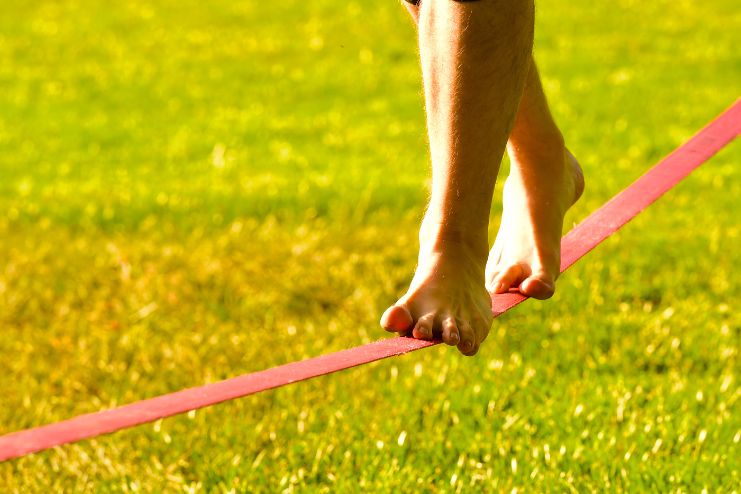
While barefoot training has some great benefits, it’s important to be aware of the potential risks and drawbacks, too. If you’re considering ditching your shoes, here are a few things you need to keep in mind:
- Adapting Too Quickly: Starting barefoot training too quickly can cause soreness and overuse injuries, especially if your feet aren’t conditioned for it. It’s important to ease in gradually to avoid putting too much strain on untrained muscles and tendons.
- Not Suitable for Everyone: If you have specific foot conditions like flat feet or plantar fasciitis, going barefoot may not be the best idea. Shoes with proper arch support might be necessary to prevent discomfort or injury.
- Increased Impact on Joints: Without the cushioning of shoes, the impact of activities like running and jumping can be harsh on your feet, ankles, and legs. This may lead to shin splints or even stress fractures over time.
- Injury and Infection Risk: Barefoot training on rough or public surfaces can lead to cuts, stress fractures, and exposure to bacteria or fungi, increasing your risk of both injuries and infections.
- Discomfort on Hard or Cold Surfaces: Barefoot training on hard or cold surfaces can be quite uncomfortable, especially if your feet aren’t accustomed to direct contact with the ground. This can lead to pain as they adjust.
- Hygiene Concerns: Some gyms or fitness centers may not allow barefoot training due to hygiene and safety concerns. Barefoot exercises in public areas can also expose you to germs, making hygiene a factor to consider.
In short, while barefoot training can be a rewarding experience, it’s important to ease into it slowly, choose safe surfaces, and be mindful of any pre-existing foot conditions.
How to Transition to Barefoot Training Safely?
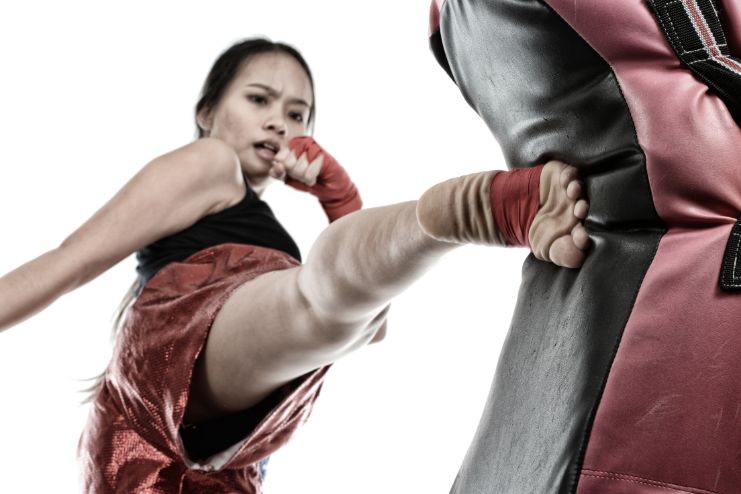
Thinking about giving barefoot training a try? Jumping in too fast can lead to injury, so here’s a simple guide to help you transition safely:
- Start Slowly: Don’t rush into barefoot training—your feet need time to adjust. Start with short barefoot sessions to gradually strengthen your foot muscles without putting too much stress on them.
- Choose the Right Surfaces: Ease into barefoot training by starting on soft, forgiving surfaces like grass, sand, or even a yoga mat. These surfaces reduce the impact on your feet while they get used to the new movement.
- Strengthen Your Feet: Incorporating foot-strengthening exercises is a great way to prepare for barefoot training.
- Pay Attention to Your Body: If you experience any discomfort or pain, stop and give your feet a break. Barefoot training can be intense on your feet at first, so listen to your body and don’t push too hard too fast.
- Consider Minimalist Shoes: If you’re not quite ready to go completely barefoot, minimalist shoes (shoes that have little to no cushioning) are a good compromise. They offer some protection for your feet while still allowing for more natural movement compared to traditional shoes. This can help ease your transition while offering a bit of extra support.
- Consult a Professional: If you have pre-existing foot conditions or concerns, it’s a good idea to consult with a podiatrist or physical therapist before starting barefoot training. They can provide guidance based on your specific needs.
Read More: Top Barefoot Running Shoes
Barefoot Training in Different Sports & Workouts

Barefoot training can be a game-changer across various sports and workouts. Here’s how it fits into different types of activities:
- Running: Running barefoot encourages a natural forefoot strike, which can reduce the impact on your joints. But take it slow—jumping right into barefoot running can lead to stress injuries, so ease into it gradually.
- Weightlifting: Lifters often go barefoot for better stability and grip, especially during exercises like squats and deadlifts. Going shoeless helps you feel more grounded, which can improve your form and balance.
- Yoga and Pilates: These practices are almost always done barefoot to enhance balance, flexibility, and controlled movements. Being barefoot helps you connect with the ground better, improving posture and flow.
- Martial Arts & Dance: Barefoot training is standard in martial arts and dance, where footwork, agility, and grounding are key. Training without shoes lets you move more freely and feel more connected to the floor.
- Bodyweight Exercises: Bodyweight moves like squats, lunges, and push-ups benefit from barefoot training as they help engage more muscles and improve stability.
- Plyometrics and Balance Training: Explosive exercises like jump squats, box jumps, and balance drills can be performed barefoot to increase muscle activation and coordination.
- Sports Played on Sand: If you’re into beach volleyball or activities played on soft ground like sand, barefoot training can help you build strength and stability, making you more agile on uneven surfaces.
With barefoot training, the key is variety. Mix it into your workouts slowly and watch how it enhances your performance across different activities!
Final Thoughts
In conclusion, barefoot training offers a unique blend of benefits and risks. While it can strengthen foot muscles, improve balance, and promote natural movement, it also demands careful attention to avoid injury, especially for beginners or those with pre-existing foot conditions.
Whether you’re a runner looking for a natural stride, a weightlifter seeking more stability, or someone focused on improving overall balance and agility, barefoot training can be a valuable addition to your routine.
A gradual transition, combined with exercises like toe spreads and calf raises, can help ease the shift to barefoot workouts. For those not ready to fully embrace the barefoot lifestyle, minimalist shoes offer a middle ground.
Ultimately, barefoot training can elevate your fitness in various sports and workouts, but like any fitness trend, it requires patience and mindful progression.
After all, the path to stronger feet may start with a single, shoeless step!
References
In this Article














